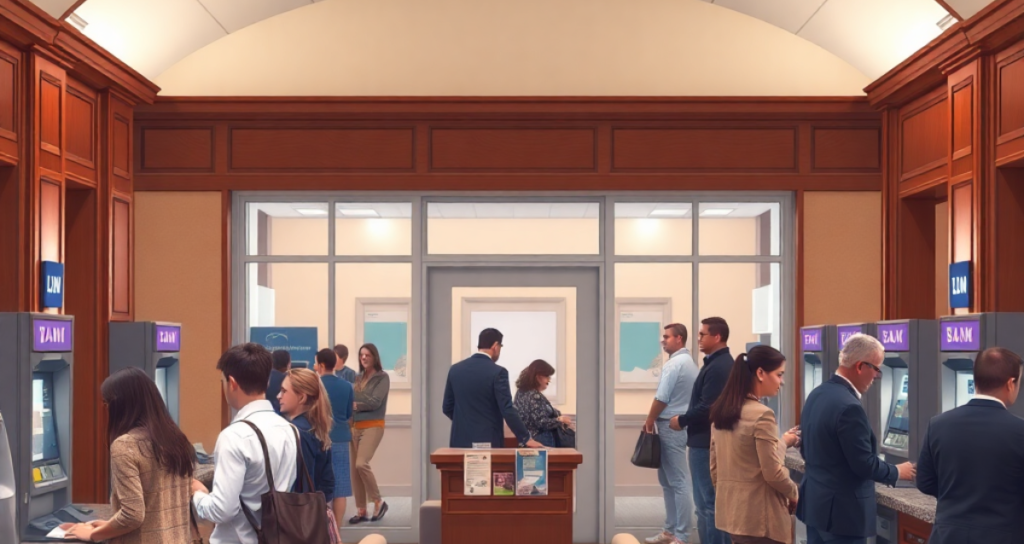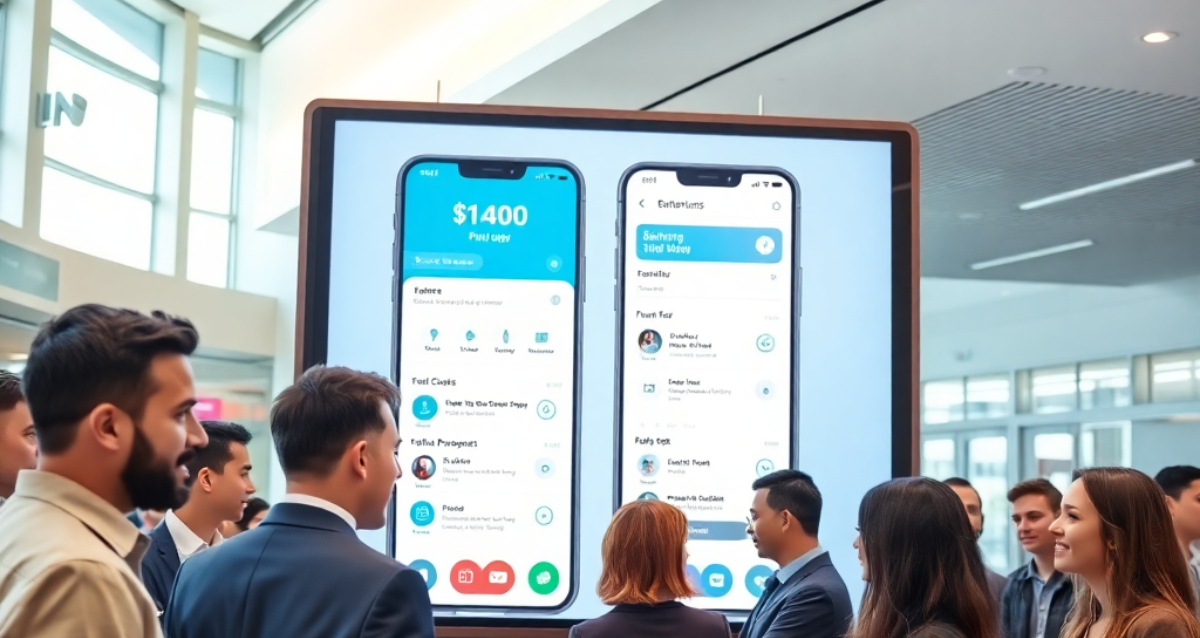Technology is revolutionizing traditional banking as fintech advancements expand the accessibility of financial services. Mobile-first solutions have enabled consumers to conduct transactions promptly, thereby eliminating the need for physical locations. Mobile banking apps and digital-only institutions offer seamless financial management, convenience, and flexibility, and they alter client expectations. Mobile-based banking is becoming increasingly popular, particularly in regions that lack traditional institutions.
Established institutions are incorporating digital solutions to maintain their competitiveness in the realm of mobile banking. From investment management to bill payments, mobile applications enhance accessibility and usability. This shift highlights how traditional banks technology for mobile apps is bridging the gap between conventional banking and modern financial needs, ensuring a seamless and efficient banking experience.
Table of Contents
Traditional bank technology for Mobile Apps
Conventional banks understand they have to change with the times and into the digital age. They have created mobile apps with a range of services by using technology, therefore bridging the gap between traditional banking and contemporary financial solutions. These tools enable consumers to effortlessly handle their money free from the need to visit actual branches.
Conventions of Classical Banking: Traditional banking is the term used to describe conventional financial institutions delivering a broad spectrum of services including loan approval, deposit acceptance, and financial advice services. Historically, these services were mostly offered through physical locations where clients interacted personally with bank employees.
Definition of Mobile Banking: Conversely, mobile banking is the access to financial services via mobile devices such as tablets and smartphones. This covers checking account balances, financial transfers, bill payments, and even distant check depositing. With unmatched ease and flexibility, mobile banking has transformed consumer interaction with their banks.
Aim and Coverage of the Report: This paper attempts to offer a thorough investigation of how conventional banks are incorporating technology into their mobile apps. It will look at the development of conventional and mobile banking, weigh their characteristics, and investigate the benefits and drawbacks of each. The paper will also show future trends and offer case studies of effective deployments.
An Overview of Conventional Banking

Background Information in History
Deeply ingrained in history, traditional banking has changed over the ages to become the pillar of financial institutions all over. Banking operations were first carried out at physical sites under manual ledger maintenance. Computerized systems brought forth over time improved efficiency but still mostly depend on branch-based interactions.
Core services provided
Conventional banks provide a whole range of services meant to satisfy the financial demands of their clients.
Savings and Drawdowns: Consumers may fund many kinds of accounts, including fixed deposits, checking, and savings. One can make withdrawals over the counter, via cheques, or at an ATM.
Loan services: Personal loans, mortgages, and corporate funding are just a few of the uses for loans banks grant. These offerings include extensive collateral appraisals and creditworthiness assessments.
Financial Advisory: Many classic banks provide advisory services, helping clients with wealth management, retirement planning, and investment selections. Usually, these services are offered by bank-qualified financial advisers.
Infrastructure and Physical Presence: A trademark of conventional banking is its vast branch and ATM network. This physical infrastructure lets consumers seek individualized help and complete transactions in person, hence facilitating face-to-face contact.
Customer Support and Interaction: Conventional banks stress the need to develop bonds with their clients. Available to answer questions, handle problems, and offer customized financial solutions are personal bankers and customer support agents.
Mobile Banking an All-Around Review
Mobile banking offers convenient, on-the-go financial management through smartphones and tablets.
Evolution and Development: Mobile banking has emerged thanks in great part to the explosion of cell phones and developments in wireless technology. Mobile banking first offered just the most basic features money transfers and balance queries. These days, they include a broad spectrum of capabilities that either equal or often transcend conventional banking offerings.
salient Characteristics and Services: Many elements of modern mobile banking apps are meant to improve user experience and offer complete financial management capabilities.
Account Maintenance: Real-time account balances, transaction history, and statements let users closely check their money.
Transfer Funds for Funds: Whether locally or abroad, mobile applications enable fast and safe transfers between accounts within the same bank or to other accounts.
Bill Payments: Through the app, consumers may make one-time bill payments to utilities, credit cards, and other service providers or arrange regular payments to credit cards.
Mobile Deposits for Checks: Users of the gadget may send checks remotely via the webcam, therefore removing the need to visit a bank.
Resources for Budgeting: Many applications provide budgeting tools that track spending trends, classify costs, and give ideas to let users properly handle their money.
Peer-to-Peer Awards: Often incorporated are services like Zelle or Venmo, which let consumers instantaneously transmit money to friends or relatives.
Managing Investments: Access to investment accounts made possible by some mobile banking systems lets users monitor portfolios, purchase and sell stocks, and get financial advice.
loan Applications: Direct loan application for customers via the app is possible; certain banks provide rapid approvals and payouts.
Accessibility via Technology: Modern technologies enable mobile banking to offer a flawless user experience. Real-time warnings, push notifications, and biometric authentication all help to improve security and keep consumers informed. The availability of these services guarantees that banking is no longer limited to conventional business hours or venues.
Safety Protocols: Mobile banking starts with security. To protect consumer information and stop illegal access, banks use multi-factor authentication, sophisticated encryption, and ongoing surveillance.
Comparative Study: Mobile Banking vs Traditional Banking
While seemingly different, traditional and mobile banking are increasingly intertwined. Traditional banks technology for mobile apps is blurring the lines between the two.
1: Convenience and Accessibility: The integration of traditional banks technology for mobile apps has significantly improved accessibility for customers. While conventional banks depend on physical locations, mobile banking provides 24/7 financial service access from any point. This change improves convenience by letting consumers make transactions at any moment free from branch hours.
2. Branch Availability Against 24-hour Access: Conventional banking products are linked to physical sites and demand clients to visit branches for several transactions. This guarantees customized service, but it also limits accessibility, especially for people living in far-off locations. By contrast, mobile banking removes the requirement for in-person visits by giving round-the-clock access to financial services.
3 . List of Services
Complete Offers Against Particularized Attributes: Conventional banks offer commercial banking, wealth advising, and investment management among other complete range of financial services. Though not as widely used, mobile applications are fast changing with tailored features including artificial intelligence-driven financial analytics and automatic savings options.
4. Implications for Cost
Taxes and Charges: Because of running expenditures like rent and manpower, brick-and-mortar banks can demand more fees. By using conventional traditional banks technology for mobile apps, mobile banking lowers these expenses and lets consumers pay fewer transaction fees and fewer maintenance charges.
Running Costs: While mobile banking lowers operating costs by moving services to digital platforms, traditional banks pay more for infrastructure upkeep.
5. Experience for Customers: Customized Services vs User-Friendly Interfaces Face-to-face contacts provided by physical bank branches help to build confidence and tailored financial guidance. Mobile banking does, however, offset with AI-powered chatbots, user-friendly interfaces, and tailored financial suggestions.
6. Fraud Prevention and Security
Conventional Safety Measures: Conventional banks use physical document inspections and in-person identity verification as security measures. Although successful, these steps might take time.
Digital Safety Guidelines: Using traditional banks technology for mobile apps has brought cutting-edge security features including biometric verification, encryption, and real-time fraud detection, therefore guaranteeing safer transactions for consumers.
Benefits of Conventional Banking
Personal Communication and Confidence: Particularly for difficult financial decisions like mortgages and investments, traditional banks offer direct client contacts, hence strengthening long-term relationships and trust.
All-Inclusive Financial Services: From personal loans to estate planning, conventional institutions provide a broad range of services unlike those of digital-first banks, therefore guaranteeing complete financial management.
Created Regulatory Compliance: Strict rules under which traditional banks run guarantee client safety and financial law compliance.
Physical Tools for Exchange: Legal documents, big transactions, and specialist financial services may all be handled safely in physical locations.
Benefits of Mobile Banking
Time efficiency and convenience: Powered by traditional banks technology for mobile apps, mobile banking removes the need for actual visits by letting users instantaneously manage accounts, pay bills, and transfer payments.
Real-Time Transaction Tracking
Instant transaction alerts provide consumers more control over their financial lives and help to lower fraud risks.
Improved Methods of Financial Management: Many mobile banking applications assist consumers make wise financial decisions by including artificial intelligence-driven budgeting tools, investment monitoring, and automatic savings capabilities.
Reduced Operational Expenses: Banks may pass on cost savings to consumers through lower fees and greater interest rates on savings accounts by cutting infrastructure and personnel-related expenditures.
Difficulties and Restrictions

Old Banking
- Limited Accessibility: Rural areas and underserved communities often struggle with limited access to physical branches, making banking services less convenient.
- Higher Operational Costs: Maintaining branches, staffing, and security measures contribute to higher costs, often passed on to customers in the form of service fees.
- Slower Service Delivery: Manual processes and in-person approvals can lead to longer processing times for services like loan approvals and fund transfers.
Mobile finance
- Security Issues: Mobile banking is still prone to cyberattacks and data breaches notwithstanding strong security policies.
- Technological Obstacles: Older persons and others not accustomed to digital platforms might find mobile banking difficult, therefore restricting adoption.
- Lack of Personal Interaction: Mobile banking has not yet completely closed the gap between certain consumers who would like in-person meetings for difficult financial decisions.
Future Trends
Banking’s future is digital, and conventional institutions’ technology for mobile apps is very vital. Unquestionably, banking is digital, traditional banks technology for mobile apps is key in determining their future. Changing consumer expectations and technical developments are driving fast changes in the scene. All focused on the growing relevance of traditional banks technology for mobile apps, let us investigate some main developments influencing the direction of finance.
Integration of Advanced Technologies: Modern technologies including artificial intelligence (AI), machine learning (ML), and blockchain will likely find further incorporation in mobile banking apps. These developments should completely change our relationship with our money.
Artificial Intelligence and Machine Learning: AI-driven chatbots and predictive analytics are enhancing customer care and individualized responses. Traditional banks technology for mobile apps is integrating AI and machine learning for mobile apps, resulting in a more proactive and user-centric banking experience.
Blockchain and cryptocurrencies: Banks are exploring blockchain technology to enhance transaction security, simplify cross-border payments, and reduce costs. While cryptocurrencies‘ acceptance within banks is debated, blockchain technology has the potential to increase financial transaction efficiency. Integration depends on traditional banks technology for mobile apps.
Expansion of Digital Services by Traditional Banks: Traditional banks are embracing digital-first approaches to expand their services, merging mobile banking capabilities with traditional systems. This allows customers to access loan applications and account management through their mobile devices, relying on ongoing innovation in traditional bank technologies.
Emergence of Neobanks and Fintech Innovations: Neobanks are disrupting the financial sector by offering user-friendly interfaces and low-cost app-based banking experiences. Fintech businesses are creating specialized financial tools for mobile banking systems. Traditional banks technology for mobile apps must quickly adopt conventional bank technology for mobile applications to stay competitive. Future cooperation between banks and fintechs is expected to increase.
Case Illustrations
Case illustrations provide real-world examples to clarify complex concepts or demonstrate practical applications.
Conventional Banking Using Mobile Solutions: Leading banks such as JPMorgan Chase and Bank of America have effectively combined traditional banks technology for mobile app technologies to improve customer experience using virtual assistants driven by artificial intelligence and mobile payment solutions.
Mobile-only banks: success stories: Offering fee-free banking, fast transfers, and sophisticated financial management features, digital-only banks such as Chime and Revolute have attracted appeal.
Conclusion
The convergence of traditional banking and mobile technology is revolutionizing the financial industry. Traditional banks technology for mobile apps is providing customers with greater financial control and unmatched convenience. As banks continue to adopt digital solutions, those that embrace traditional banks technology for mobile apps will remain competitive and better serve their customers. Despite challenges such as security risks and technological barriers, the benefits far outweigh the drawbacks. The ongoing innovation in traditional banks technology for mobile apps will enhance security, efficiency, and user experience. As the financial landscape evolves, the seamless integration of traditional banks technology for mobile apps will be essential in shaping the future of banking.
FAQs
How have established banks embraced mobile banking?
Mobile apps including cash transfers, AI-driven financial analytics, and real-time transaction monitoring have been included in traditional banks.
What technologies are enhancing mobile banking?
Leading technologies enhancing mobile banking experiences are artificial intelligence, blockchain, biometric identification, and machine learning.
Are costs charged by traditional banks higher than those of mobile banks?
Indeed, operational expenses of traditional banks can result in higher rates; mobile banks might provide reduced fees by running virtually.

